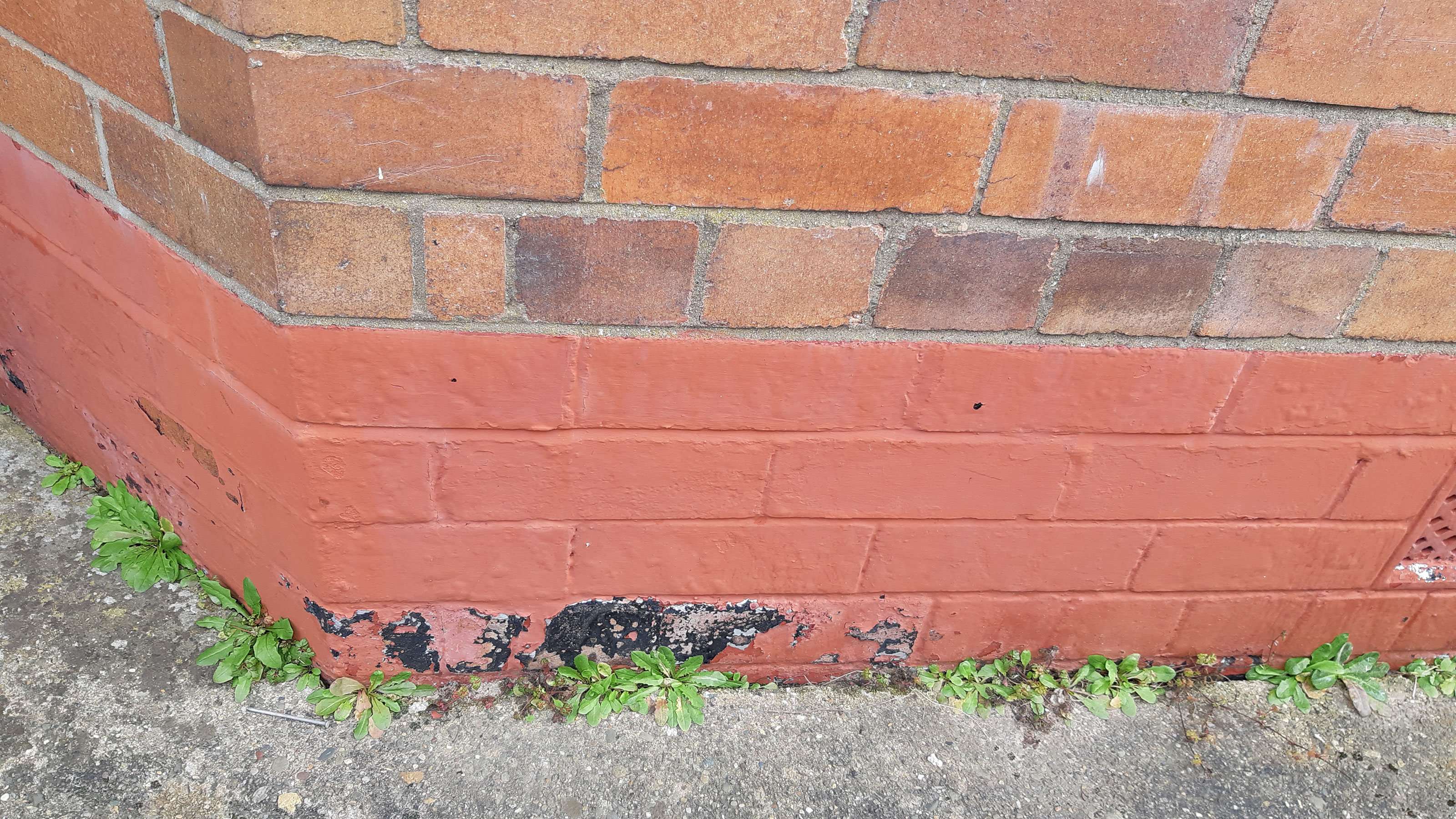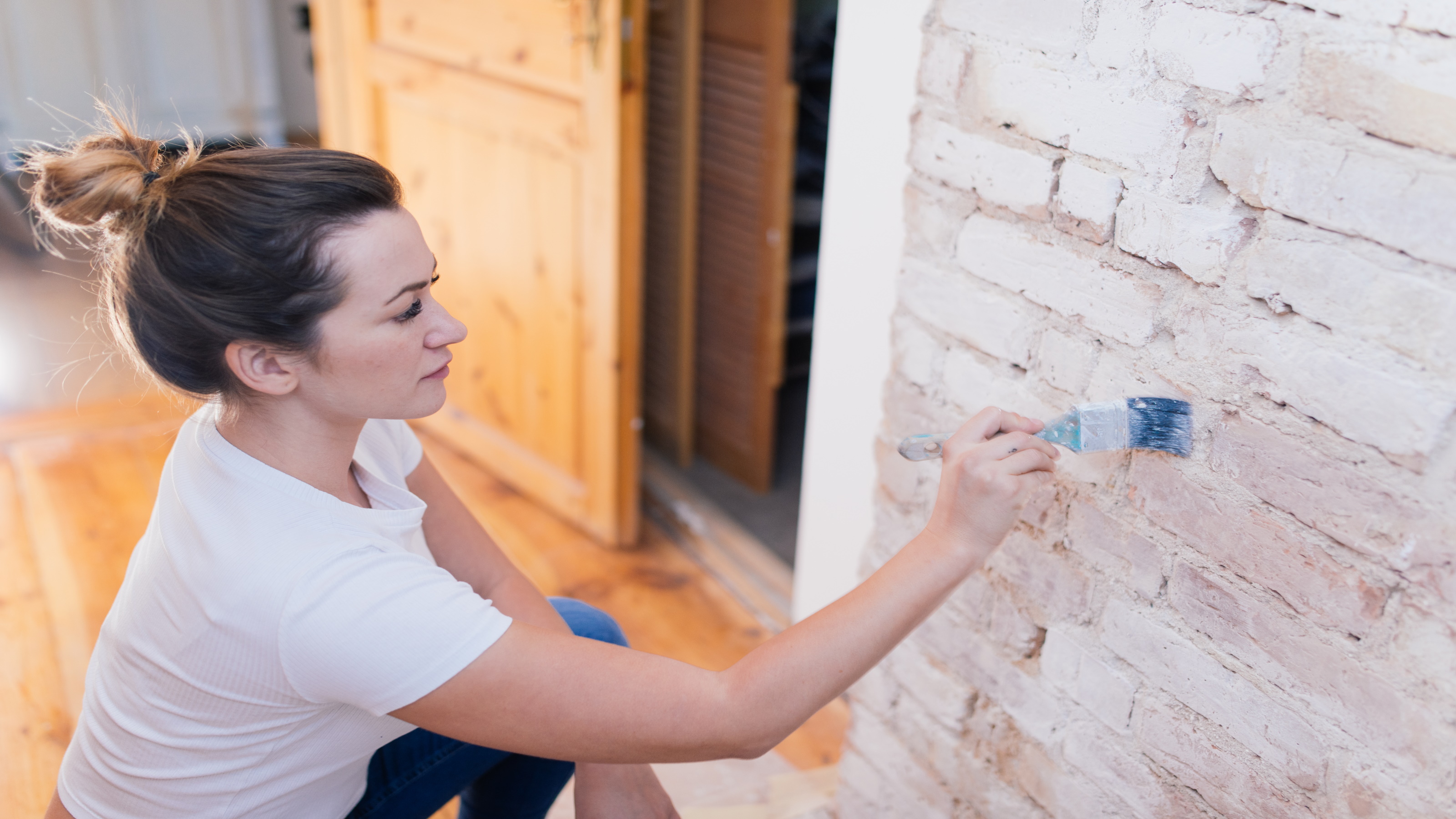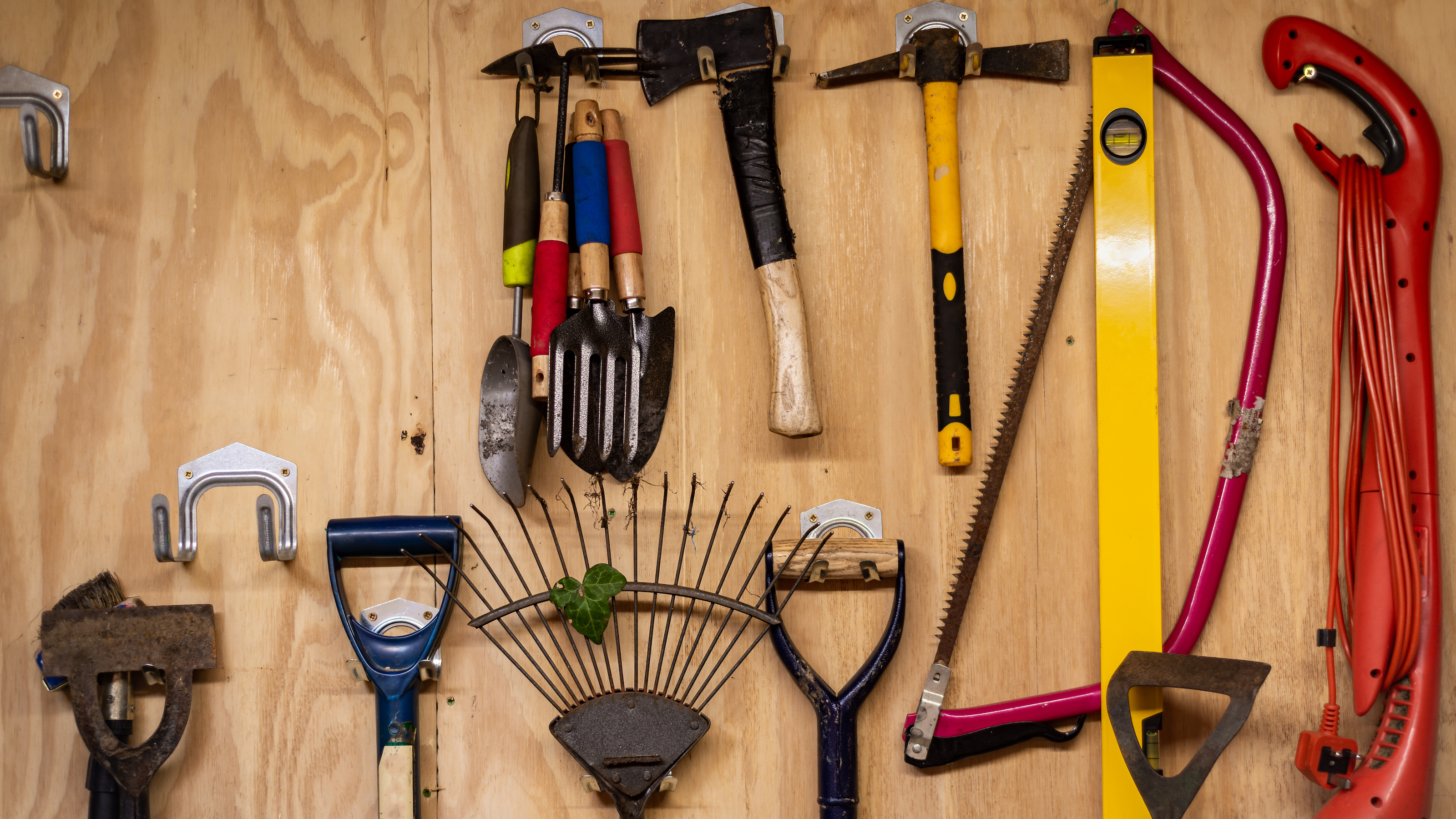Removing Paint From Brick: A How-To Guide
Removing paint from brick can help get rid of any unsightly flaking paintwork on your walls. Return to the original beauty of brick with our guide

Removing paint from brick not only helps refresh the overall look of your home, but also allows your brickwork to breathe again. This means the bricks themselves will have an extended lifespan and require less maintenance in the long run.
Like painting a wall, removing flakey paintwork from interior brickwork will also help to improve your home's interiors. It could perhaps help you uncover some beautiful period bricks, too.
Our expert guide gives you advice on the techniques and products needed for removing paint from brick, and the cost, so you can help the bricks around your home look their best. We'll also reveal when to call in the professionals.
Can You Remove Paint From Brick?
Yes, removing paint from brick is possible, but there are a few things you need to take into consideration first.
For starters, you must consider the condition of the existing brickwork and the original paint used. If you have older brickwork, sandblasting or similar will likely damage the bricks, but this is a less common problem with newer brickwork.
Sandblasting is really only a choice for outdoor brickwork, though, as it will make a lot of mess. For smaller/indoor surfaces, a more subtle solution is needed, such as a paint stripper and a selection of basic tools.
It is also worth considering the types of brick used in the build of your home, which will affect how vigorously you approach the paint removal process.
Finally, do check what paint has been used beforehand, too, e.g., lead paint, as this can help determine what’s needed to best remove the paint.
What Removes Paint From Brick?
The popular option when removing paint from brick is to use a gel-based paint stripper, a brush to apply it with, and a decent scraper to clear the bulk of the paint off the brickwork.
Once most of the paint has been removed, you can then use hot white vinegar to remove any paint residue.
For finishing touches, run a wire brush drill attachment over the scraped area, and use a small toothbrush-like wire brush for more intricate zones.
Does Acetone Remove Paint From Brick?
Acetones versatile nature means you can use it to remove paint and clean paint off of other surfaces, too, including brick.
Acetone is an environmentally friendly option for removing paint from brick and does a decent job. It also dissolves paint pretty quickly, so don't leave the work unattended if you plan on using this product.
Keep in mind as well that acetone's strong odour and high flammability mean you should handle with care, particularly around any electric-powered tools.
What is the Best Way to Remove Paint From Brickwork?
This depends on the job. For large exterior areas in good condition – like the exterior of a house – sand or soda blasting is an option, but you should leave this to the professionals, as the tools required are heavy-duty and best operated by experts.
For smaller areas or interior brickwork, a gel paint stripper like Nitromors or PeelAway are good choices, and can be used successfully with care by any home DIY'er.

How to Remove Paint From Brick
1. Test and Prepare the Area
Before going all out, apply your paint stripper on a small area of the brickwork. This will give you a good indicator of how well the stripper works and the condition of the bricks, as well as an idea of how much work is going to be involved. If the paint is old, it might be worth testing for lead with a suitable kit. (You can pick up basic lead painting test kit for under £20 on Amazon.)
Next, prepare your workspace. You will need to lay down dust sheets – or strong plastic sheeting – to collect any paint and debris. Weigh down the corners and tape the edge next to the brickwork.
2. Make Sure You Protect Yourself
You don’t want to get any paint stripper on your skin, so wear overalls, or at least clothes that cover your arms and legs.
It's also a good idea to wear gloves when applying the stripper, goggles and a dust mask when using a wire brush, or wire brush attachment, as this usually brings up a lot of dust.
3. Apply the Paint Stripper
Get yourself a paintbrush – a four-inch brush is a good choice – and apply the paint stripper.
For harder-to-reach areas, i.e. mortar joints, dab in the stripper with a brush. Remember to read the specific product instructions on how to apply.
When starting, work in small sections, ideally one-metre squares. Then, double the size of the area of the paint stripper to two x one-metre sections. This means you can work on one section while the stripper removes paint from the other.
4. Remove the Paint
Leave the paint stripper for as long as instructed. Start at the top and work across, down and across again. This helps ensure that you get as little paint and stripper on you as possible.
For stubborn areas, you may need to go back and apply the stripper again. Clear away any old paint before continuing.
When finished, use hot white vinegar to remove the paint residue. Dab on and wipe with a cloth. Finally, use a wire brush – or wire brush drill attachment – to remove any further excess paint, if needed.
5. Finish With Warm Water
Once you are done removing paint from brick, you need to finish by washing the entire area with warm water. This will help get rid of any paint stripper residue and dust.
Finally, leave to dry. Afterwards, your brickwork should be looking pristine again.
How Much Does It Cost to Remove Paint From Brick ?
The cost for removing paint from brick will vary considerably depending on the size of the job.
Removing paint from the exterior of your home is a large project best left to the professionals. Expect to pay around £50 per square metre. Other factors such as the condition of the brickwork and whether or not scaffolding is needed will add to the price. Expect to pay around £1,000 for an entire house.
Painting a brick fireplace is a popular task to cover ugly brickwork, but if you prefer to remove it (or have some beautiful period bricks beneath), then a small project like this will be considerably less. Expect to pay around £100-£200 for a professional to do it.
If undertaking the job yourself, you’ll need to budget for your chosen products and a few basic tools. A popular paint stripper like Nitromors will cover around 5m2 for £25-30.
For a stubborn heavily layered paint job, PeelAway 7 is a good choice. This is a little more expensive at around £60 for the same area, but some retailers do stock it as a kit, with blankets and a spatula to apply.
For pre-1970s paint, the same company has a specialist stripper known as PeelAway 1.
What If the Paint Has Damaged the Brickwork?
Paint won’t damage your brickwork, but it may block the porous nature of brick, which can lead to it retaining moisture. If this happens, the brick will start to degrade and cause the paint to flake.
Here, you have two choices: remove the paint and leave the brick in its natural state, or be prepared to repaint the brick on a regular basis, ideally using one of the best masonry paints you can find.
Ideally it's best left in its natural state. This commonly applies to exterior brickwork rather than interior brick.
Can You Remove Paint From a Brick Fireplace?
The same principles apply when it comes to removing paint from a brick fireplace or other interior brickwork.
Assess the brickwork and the paint used. Is the brickwork in good or poor condition? If covered in soot, clean off first.
How many layers of paint are there? How long has the paint been on the fireplace? The most common approach would be to apply a gel paint stripper with a disposable brush and remove with a scraper.
To finish, use a wire brush to remove any leftover paint. Then, use a small wire brush to clean the mortar. Repeat the process on any stubborn areas.
Get the Homebuilding & Renovating Newsletter
Bring your dream home to life with expert advice, how to guides and design inspiration. Sign up for our newsletter and get two free tickets to a Homebuilding & Renovating Show near you.
Steve Jenkins is a freelance content creator with over two decades of experience working in digital and print and was previously the DIY content editor for Homebuilding & Renovating.
He is a keen DIYer with over 20 years of experience in transforming and renovating the many homes he has lived in. He specialises in painting and decorating, but has a wide range of skills gleaned from working in the building trade for around 10 years and spending time at night school learning how to plaster and plumb.
He has fitted kitchens, tiled bathrooms and kitchens, laid many floors, built partition walls, plastered walls, plumbed in bathrooms, worked on loft conversions and much more. And when he's not sure how to tackle a DIY project he has a wide network of friends – including plumbers, gas engineers, tilers, carpenters, painters and decorators, electricians and builders – in the trade to call upon.

